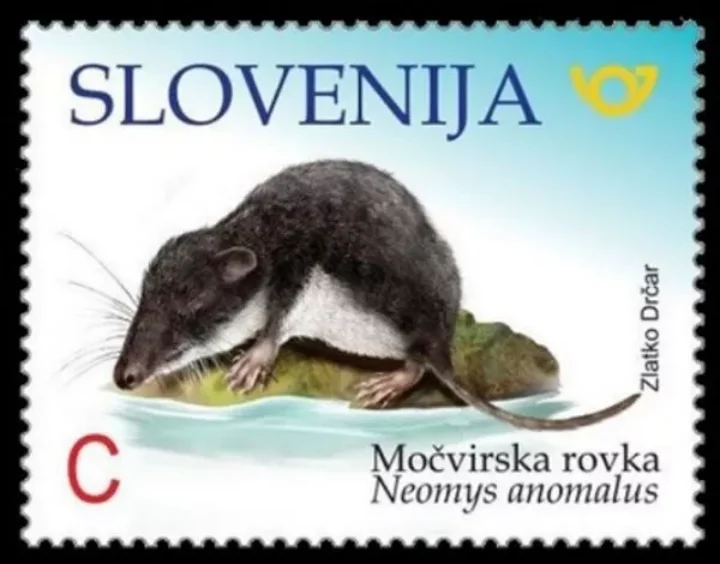Slovenia stamp year 2018 Fauna Mediterranean water shrew Neomys anomalus ☀ MNH**
The Mediterranean water shrew (Neomys anomalus) is a small, semi-aquatic mammal belonging to the family Soricidae (the shrew family). It is native to parts of Europe and the Mediterranean region. Here’s a brief overview of its characteristics:
Physical Description:
- Size: The Mediterranean water shrew is relatively small, typically growing to about 6–9 cm (body length), with a tail of around 4–6 cm.
- Weight: It weighs between 10–15 grams.
- Fur: The fur is typically dark gray to brown on the upper side, with lighter, grayish underparts. The dense, water-repellent fur helps it stay dry while swimming.
- Tail: The tail is slightly flattened, which helps in swimming.
Habitat:
- The species prefers wetlands, riversides, marshes, and streams in forested or open areas. They are particularly found in southern and central Europe and parts of the Mediterranean.
- It thrives in habitats that are near fresh water, where it can hunt for its aquatic prey.
Diet:
- The Mediterranean water shrew is primarily insectivorous, feeding on small invertebrates like insects, crustaceans, and mollusks. It can also prey on small fish and amphibians.
- It uses its sharp teeth to kill prey, and its ability to swim allows it to hunt in both terrestrial and aquatic environments.
Behavior:
- These shrews are mostly nocturnal and solitary. They are excellent swimmers, using their webbed feet and flattened tail to propel themselves through water.
- They have a high metabolic rate, meaning they need to eat frequently to sustain themselves.
Conservation Status:
- The Mediterranean water shrew is not currently considered endangered, but like many small mammals, it may face threats from habitat destruction, particularly the degradation of wetlands.
This species is a fascinating example of adaptation to both terrestrial and aquatic environments.














Reviews
There are no reviews yet.